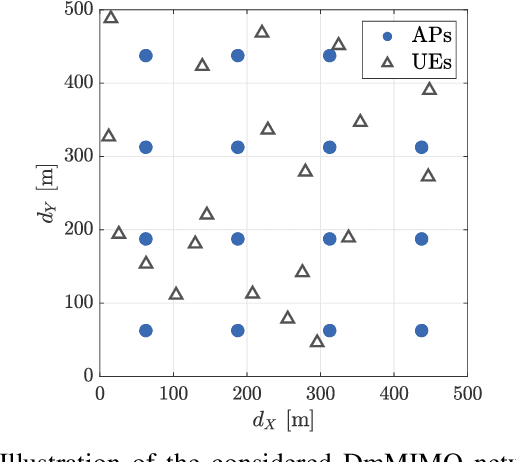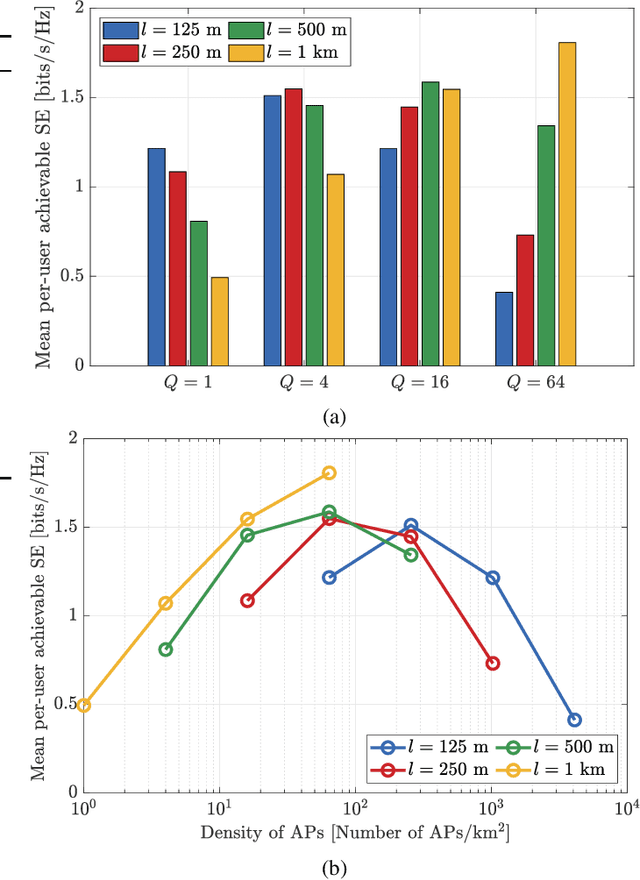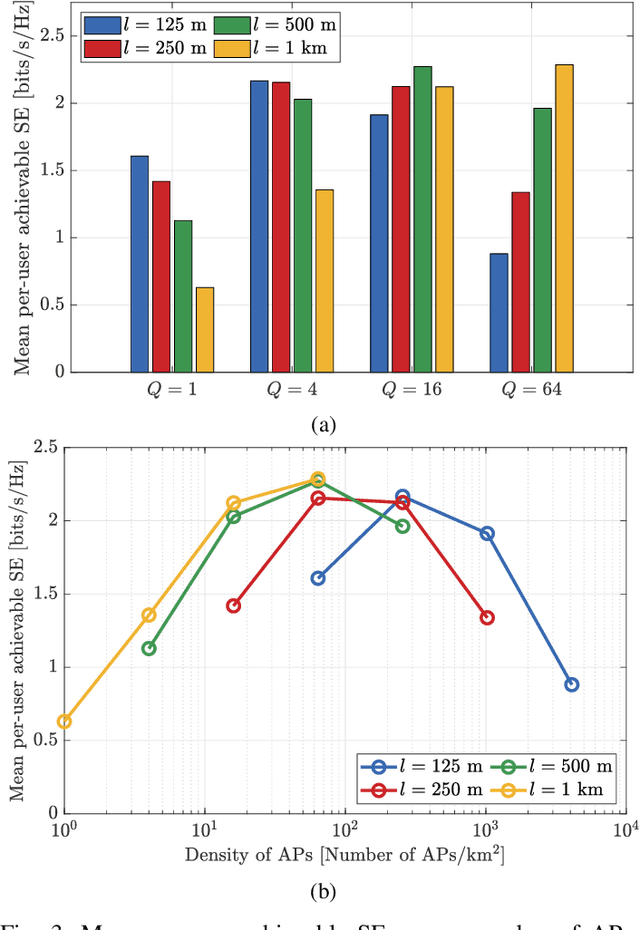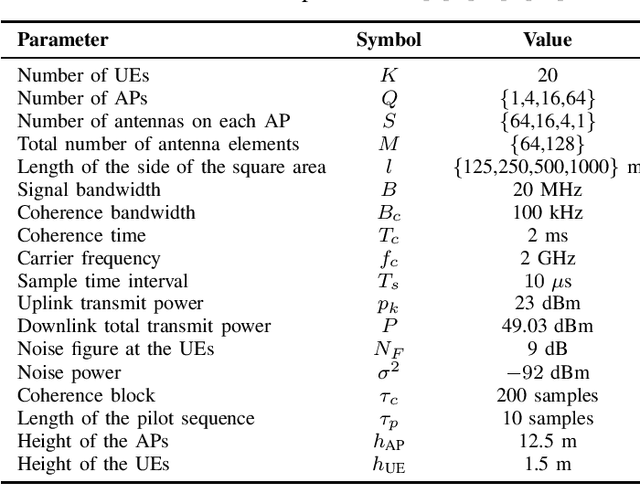Sivarama Venkatesan
Trade-Off Between Beamforming and Macro-Diversity Gains in Distributed mMIMO
Sep 10, 2023



Abstract:Industry and academia have been working towards the evolution from Centralized massive Multiple-Input Multiple-Output (CmMIMO) to Distributed mMIMO (DmMIMO) architectures. Instead of splitting a coverage area into many cells, each served by a single Base Station equipped with several antennas, the whole coverage area is jointly covered by several Access Points (AP) equipped with few or single antennas. Nevertheless, when choosing between deploying more APs with few or single antennas or fewer APs equipped with many antennas, one observes an inherent trade-off between the beamforming and macro-diversity gains that has not been investigated in the literature. Given a total number of antenna elements and total downlink power, under a channel model that takes into account a probability of Line-of-Sight (LoS) as a function of the distance between the User Equipments (UEs) and APs, our numerical results show that there exists a ``sweet spot" on the optimal number of APs and of antenna elements per AP which is a function of the physical dimensions of the coverage area.
Precoding-oriented Massive MIMO CSI Feedback Design
Feb 22, 2023

Abstract:Downlink massive multiple-input multiple-output (MIMO) precoding algorithms in frequency division duplexing (FDD) systems rely on accurate channel state information (CSI) feedback from users. In this paper, we analyze the tradeoff between the CSI feedback overhead and the performance achieved by the users in systems in terms of achievable rate. The final goal of the proposed system is to determine the beamforming information (i.e., precoding) from channel realizations. We employ a deep learning-based approach to design the end-to-end precoding-oriented feedback architecture, that includes learned pilots, users' compressors, and base station processing. We propose a loss function that maximizes the sum of achievable rates with minimal feedback overhead. Simulation results show that our approach outperforms previous precoding-oriented methods, and provides more efficient solutions with respect to conventional methods that separate the CSI compression blocks from the precoding processing.
 Add to Chrome
Add to Chrome Add to Firefox
Add to Firefox Add to Edge
Add to Edge